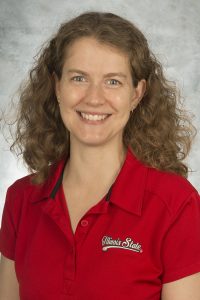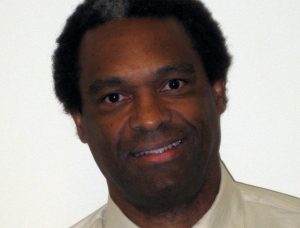The following news briefs detail grants received by Illinois State faculty.
Appears InBusiness professor studies wine trails to explore collective entrepreneurship
Illinois State Business Professor Peter Foreman is working with co-investigator and project director Randy Westgren, of the University of Missouri, on a $500,000 grant from the U.S. Department of Agriculture to study group entrepreneurship and collective action in the wine industry.
The three-year research project, which began in 2014, examines the development of wine trails, state associations, regional labels, and appellations. The team is trying to understand how these cooperative activities lead to higher levels of consumer acceptance, market share, reputation, and similar measures of success in the industry.
The project will entail approximately 80 to 100 interviews with winery owners and managers and key industry leaders in three states: Missouri, New York, and Virginia. These interviews will be followed by surveys of a broader sample of wine trails and their members.
Wine trails are a particular example of collective action where individuals or organizations, who would otherwise be competitors or would not have a reason to associate with one another, choose to come together to take action to accomplish a common purpose. There isn’t a good understanding of how and why this cooperation takes place in the business world and what factors determine the collectives’ success or failure.
Maximizing crop yield, minimizing nutrient loss in Midwest
Illinois State Assistant Professor of Agriculture Maria Boerngen is playing her part to help farmers maximize crop yields in the Midwest while protecting the environment as far away as the Gulf of Mexico. Boerngen’s is part of a multi-university project funded by a $4 million, four-year USDA National Institute of Food and Agriculture grant to determine the optimum amount of nitrogen fertilizer to use on farm fields.
The project uses different rates of precision-applied fertilizer in field trials on working farms in Illinois and Nebraska. The field trials will eventually be expanded to other states and to Argentina and Uruguay.
Reducing the amount of nitrogen fertilizer runoff from fields is a major concern in farming states in the Mississippi River Valley. Runoff in the past has led to environmental damage in waterways and in the Gulf of Mexico. “The major goals of this project are to reduce the size of the environmentally catastrophic, hypoxic ‘dead zone’ in the Gulf of Mexico, and in the process, maximize economic benefits for farmers,” said Boerngen.
Joseph researches impact of blast-related hearing loss on veterans
Illinois State University’s Assistant Professor of Communication Sciences and Disorders Antony Joseph is part of a team that has received nearly $1.2 million in grants from the U.S. Department of Defense (DoD) to study the long-term impact of blast-related injuries on soldiers, sailors, and Marines.
A retired commander in the U.S. Navy and an audiologist, Joseph has worked for years on the problems associated with hearing loss connected with explosions. “Blasts have a different noise signature that brings about a potentially different type of hearing loss,” said Joseph. “Our team explores and identifies whether the hearing loss in a blast looks different than a hearing loss caused by common, industrial noises.”
Joseph works closely with the Naval Health Research Center (NHRC), which will oversee the grants. His role is to analyze the enormous data set known as the BRAID (blast-related auditory injury database), which gathers information from nearly 17,000 Navy and Marine personnel with hearing loss due to explosions.
The long-term goal of the grants is to gain a better understanding of how to diagnose and treat blast-related hearing loss for the military.
Genetic secrets of muscular dystrophy
Illinois State University’s Alysia Vrailas-Mortimer received a $435,000 grant from the National Institutes of Health to continue her work understanding the genetic keys to a form of muscular dystrophy.
Mortimer, an assistant professor of aging and physiology in the School of Biological Sciences, studies the genetics behind “limb girdle” muscular dystrophy, which attacks the muscles in the shoulders or pelvis. There is no cure for the disease.
Scientists have identified 31 genes in humans that are associated with limb girdle muscular dystrophy. In her lab, Mortimer’s team studies how these various genes all contribute to the same disorder. Her team has found that one gene called p38, which has been known to regulate life span and aging, may coordinate a set of these disease-causing genes. To conduct the studies, Mortimer uses a close, genetic relative of humans—the common fruit fly.





